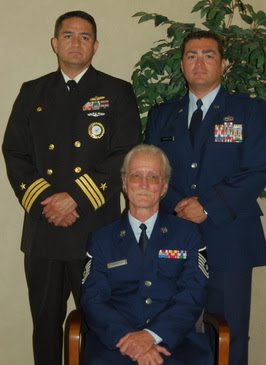
In re: the post title. It only seems that way, Gentle Reader. Soon it will be "All Hockey, All the Time." But... that said... This is kinda interesting. From the Tuesday edition of the Air Force Association’s Daily Report:
Raptor Cutoff: Production of the F-22 fighter will end at 187 aircraft if Defense Secretary Robert Gates has his way. Gates announced the decision in a round-up of Fiscal 2010 budget moves at a Pentagon press conference Monday. The F-22 buy "completes" the program at the 183 level set for it in 2005, plus four more added by Congress, Gates said, adding that "there is no military requirement for more." He later said that the Air Force told him that no more were needed, which is surprising because the service has been strongly promoting its need for more F-22s and unofficially quoting 60 as the number. Even Joint Chiefs of Staff Chairman Adm. Mike Mullen has said USAF needs 60 more F-22s. Although he did not elaborate on his decision yesterday, Gates has previously criticized the F-22 as being an overly powerful machine that has been unnecessary in
And on the same subject… here’s a blurb from today’s Daily Report:
Where's the Beef?: We've asked the Air Force for an unambiguous confirmation that its senior leadership recommended no further F-22s are needed, as Defense Secretary Robert Gates said Monday. Gates told a Pentagon press conference that "the military advice that I got was that there is no military requirement" beyond 187 F-22s, and when asked about the Air Force's position, he replied, "that was their advice as well." The Air Force's response to our query wasn't exactly on point. A USAF spokesman said, "The Air Force supports the holistic, strategic approach to next year's budget adopted by the Administration and the Secretary of Defense, and we will continue to provide our best military advice to DOD and Congress as they propose and approve a Fiscal 2010 budget. As a service, we understand the need to balance current and future requirements and to exercise fiscal discipline. We're ready to move forward with the guidance Secretary Gates has provided to make the most of the resources we're given and to work as a member of the joint team in accomplishing our nation's military objectives." We'll keep working on them for a direct answer.
God Save Us. Even the frickin’ military has gone PC these days. Even though it IS part of the culture to salute smartly and execute the order… even if you disagree with said order… there isn’t anything in the culture that prevents you from giving a direct answer to a direct question. Or there didn’t used to be, anyway.
―:☺:―
Speaking of Our Man Gates… he did an extensive interview on The News Hour last evening, and here he is holding forth on the F-22:
ROBERT GATES: I think what we're trying to do is not reduce emphasis on conventional warfare, but be more selective about the weapons systems that we fund to fight that kind of a fight. I'm not cutting the F-22; I'm not recommending the F-22; I'm simply recommending that the program set in 2005 was to build 183 of these aircrafts. I'm simply saying, let's finish that program and then let's focus on buying large numbers of the Joint Strike Fighter, the F-35, which has 10- to 15-year newer technology, has some capabilities that the F-22 doesn't have.
The F-22 is a great airplane, all you have to do is ask the pilots who fly it, but - and it will remain in the inventory, but there is no military requirement for more than 183 of them, 187 with those that are in the supplemental. So we're doing that, we're building additional ships, we're doing more in the way of theater and tactical ballistic-missile defense. We're converting more ships to have ballistic-missile defense that would help against
JUDY WOODRUFF: But by ending production in - down the road, of the F-22 Raptor, I'm already reading that shutting it down is going to mean the loss of tens of thousands of jobs. Was that something that weighed on you as you made that decision?
ROBERT GATES: Well, we can't be oblivious to the impact that these decisions have on people, but the information that's available to us shows that the direct employment of the F-22 will go from about 32,000 in - I'm sorry, from about 24,000 this year to about 11,000 in 2011. But Joint Strike Fighter will go from 38,000 people working this year to 82,000 people that work on that plane in direct support in 2011. So there are puts and takes. I think we've done a good job of taking care of the industrial base in the shipyards and the workers there in the decisions on the shipbuilding.
So we're not oblivious to the employment aspects, but to be perfectly honest, there isn't a single defense program anywhere, procurement program, that doesn't have an impact in somebody's hometown and somebody's state. And so if you're going to bring any discipline to the Defense Department budget, if you're going to try and make any selectivity, have any selectivity in terms of what you fund and don't fund, it will have an impact somewhere.
That’s just a little disingenuous… the bit about finishing the program as it was approved in 2005. The Air Force originally requested approximately 700 F-22s, back when the program was in its infancy… with the full realization that it would never be able to get that many. The F-22 is generally viewed as the follow-on replacement for the F-15, which has been in service since 1975. The Air Force operates 522 Eagles. Here’s a little blurb from Global Security.org on the subject of numbers:
A Joint Estimate Team was chartered in June 1996 to review the F-22 program cost and schedule. JET concluded that the F-22 engineering and manufacturing development program would require additional time and funding to reduce risk before the F-22 enters production. JET estimated that the development cost would increase by about $1.45 billion. Also, JET concluded that F-22 production cost could grow by about $13 billion (from $48 billion to $61 billion) unless offset by various cost avoidance actions. As a result of the JET review the program was restructured, requiring an additional $2.2 billion be added to the EMD budget and 12 months be added to the schedule to ensure the achievement of a producible, affordable design prior to entering production. The program restructure allowed sourcing within F-22 program funds by deleting the three pre-production aircraft and slowing the production ramp. Potential for cost growth in production was contained within current budget estimate through cost reduction initiatives formalized in a government/industry memorandum of agreement. The Defense Acquisition Board principals reviewed the restructured program strategy and on
The Quadrennial Defense Review Report, which was released in mid-May 1997, reduced the F-22 overall production quantity from 438 to 339, slowed the Low Rate Initial Production ramp from 70 to 58, and reduced the maximum production rate from 48 to 36 aircraft per year.
The Air Force has maintained for years that 381 Raptors is the minimum number required to achieve the air superiority mission and has only grudgingly accepted lesser numbers. Here’s an excerpt of testimony by one Christopher Bolkcom (Specialist In National Defense, Congressional Research Service), before the Senate Armed Services Committee in July of 2006:
The number of F-22's to be purchased has fluctuated considerably over time. Originally conceived of as a 750-aircraft program, DoD’s first Selected Acquisition Report that included the F-22 (December 31, 1991), reported a 648-aircraft procurement plan. Over time, the number of F-22s that could be purchased under budget limits was reduced to 442, 440, 342, 341, 278, 279, 181, and 185 (including aircraft built with RDT&E funds). The Air Force called its attempts to purchase as many F-22's as possible under budget limits a “buy-tobudget” plan. Some criticized this approach as being inconsistent with DoD’s more traditional requirements-driven weapon system acquisition strategy.
Since 2002, Air Force leaders have consistently stated that they require 381 F-22s. Further, Air Force officials point out that this requirement has been validated by DoD.
The Air Force’s stated rational for the 381 figure has not been consistent. At times Air Force officials have argued that this figure is required to field one 24-aircraft F-22 squadron in each of the Service’s 10 Aerospace Expeditionary Forces (AEFs). Other times, the Air Force has argued that 381 was the minimum number required to address emerging “nearpeer” competitors. At still other times, Air Force leaders argued for the F-22, based on their perception of the Raptor’s potential contribution to the “global war on terrorism.” Specific F-22 missions Air Force leaders described include conducting cruise missile defense over the
It is also important to note that although DoD may support the 381-aircraft goal for the F-22 in theory, DoD has cut the F-22 program by $10.5 billion. This reduction has made the 381 requirement difficult to achieve.
The Air Force is part of the problem, obviously. It’s ludicrous to justify the F-22 as a close air support platform… and the Air Force sacrificed a good deal of its credibility by attempting to do so. But that is neither here nor there. We began with Secretary Gates’ comment about the F-22 program, “as established in 2005.” The truth is just a little bit different, no?




.jpg)




This comment has been removed by a blog administrator.
ReplyDeleteWrite in English if you wish to be heard, Anon.
ReplyDeleteThe Navy is suffering the same problems, Buck. They can't seem to reach any consensus on what they need, leaving it to politicians to gut every program.
ReplyDeleteIt used to be that the senior leadership made decisions. Now they just seem to be worried about their "legacy".
It used to be that the senior leadership made decisions. Now they just seem to be worried about their "legacy".
ReplyDeleteAnd that's a sad turn of events, innit?
Thanks, Ruth.
ReplyDeleteI suspect Conrad/Ruth is not a real person. I get some of those very vaguely written comments, too. My host Crian says they screw up your traffic, and thus they must be ruthlessly purged.
ReplyDelete187 seems to be kind of a small number for a primary strike fighter to me. I know they line things up differently now, but that's really just 2 1/2 fighter wings.
Thanks, Gordon. "Ruth" is history. Your point about the 187 aircraft is VERY well taken!
ReplyDeleteI am commenting late as I was in ABQ for the last 6 days for a funeral (my Mother, rest her soul).
ReplyDeleteThe F-22 was originally designed as an Air Superiority Fighter only, in the same vein that the original F-15A was introduced. Later versions gave it additional missions. But, the F-15 was produced in the day when there were many aircraft builders out there and if you let the budget go, the DOD would cut you off and move to the next builder waiting to take the project away (just look at the history of the F-111 v F-14). That is not the environment today and there is nothing holding back the two majors right now (and who would you go to if you really wanted to make 700 of these) from driving up the cost of the development and coming up with schemes to "reschedule" monies as noted in the articles above and more.
So, when things started to look bad for the program (costs escalating, scheduling heading to the right, complaints from congress etc) what do the insiders do? They re-name it the FA-22 Strike Fighter covering both bases and talking up the "Force Multiplier" aspects of the aircraft. Well, I was a Squid and watched as the Navy fell into the same trap with that thing they call the Hornet. The only saving grace for the F-22 is that it actually does the original Job better than envisioned rather than not at all or worse as the case with the F-18.
Playing the numbers game was always a specialty with the Air Force using political maneuvering, Job outsourcing and basing to seal the deal they really wanted. Now it seems that they got turned and beat at their own game. The shame is that they sacrificed a really great aircraft and system in the process. You play with fire long enough .....
BT: Jimmy T sends.
Jimmy: I'm SO sorry to hear about your Mom. My condolences.
ReplyDeleteYour points about the F-22 are spot-ON.
Thank You Buck. She was the best. I was one of 7 (third one down, second boy) and she had 18 Grand children and 12 Great Grand children (and one on the way for delivery in October). She was married for 55 years to the same Man and was the heart and soul of the Family. It was tough leaving there, saying good bye to my Father - all alone in that little rancher that had so much warmth and Love - it was the biggest home on earth. All from one person. Such a shame. http://obits.abqjournal.com/obits/show/194801
ReplyDeleteThanks again. I was going to say something more on the F-22 but I am tearing up.
BT: Jimmy T sends.
Thanks for giving me the link to your Mom's obituary, Jimmy... MOST appreciated. Watching one's parents pass on is a VERY hard thing. My condolences, again.
ReplyDelete